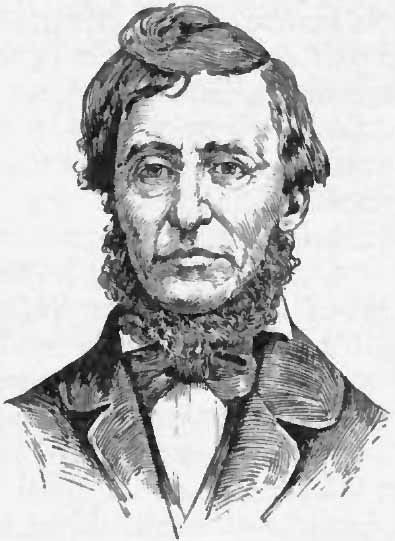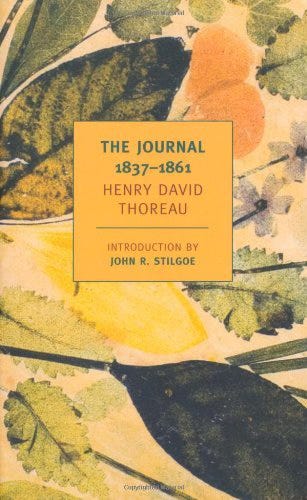Dreaming Henry Thoreau
“Are we not always living the life that we imagine we are?”
Henry David Thoreau has never been more admired, but in his own time he was widely known as a minor writer, a disciple of Ralph Waldo Emerson, and a bit of a crank. His moralism (which never lacked for judicious detractors) drew posthumous suspicions that he had been a critic of the worst kind—one motivated by enmity. “His mind strikes us as cold and wintry in its purity,” Harvard Professor James Russell Lowell wrote in the North American Review in 1865. Professor Lowell, confident that history would remember his own legacy, was not alone in accusing Thoreau of misanthropy, nor in predicting that posterity would put him in his place, as history had put his spiritual ancestors, the Puritans, in theirs.
But it is Lowell whom history has forgotten, and Thoreau it has made the equal of Emerson and the tutor of Leo Tolstoy, Mohandas Gandhi, and Martin Luther King, Jr. The 1930s marked the turning point. The portrait of democratic individualism drawn in Walden brought to those alienated from market values the imperative of revaluing their impoverishment. “Life without Principle,” a companion essay on materialism, flattered the jobless with the notion that they had gained a shot at spiritual regeneration. “Most men would feel insulted, if it were proposed to employ them in throwing stones over a wall, and then in throwing them back, merely that they might earn their wages,” Thoreau wrote of the cultural pauperization entailed by industrial discipline. “But many are no more worthily employed now.”
Thoreau filled his notebooks with observations drawn from excursions to Pine Hill, Fair Haven Pond, Baker Farm, Martial Miles Meadow, Nut Meadow Brook, and other locations surrounding Concord. Thereabouts, alone or with companions whom he sometimes neglected, he recorded the crickets chirruping, the sparrows sleeping, the shrub oaks shedding, the snow crusting over meadows, the ice cracking along the edge of rivers, the flies buzzing in the sun, and much more.
“I am like a feather floating in the atmosphere; on every side is depth unfathomable,” Thoreau wrote in a passage of ecstatic communion that disproves the romantic’s reputation for egotism. He braved a heavy fog with numbed hands and wet feet in order to visit a blueberry swamp, and arose at 3am to watch the lilies unfold. “My Journal should be the record of my love. I have no more distinctness or pointedness in my yearnings than an expanding bud, which does indeed point to flower and fruit, to summer and autumn, but is aware of the warm sun and spring influence only.”
In the 1850s, as Thoreau failed in his aspirations for a career akin to his mentor, his journal grew into a wheelhouse of tropes, a stylized work of literary artistry. In his last year, he carpentered a yellow pine for his 39 notebooks, burying his literary remains in advance of himself.
Selections first reached the public as Early Spring in Massachusetts (1881), then Summer (1884), Winter (1887) and Autumn (1894). These bowdlerized volumes, edited by a disciple, promoted Thoreau’s reputation by sticking him in the idiom of amateur science, somewhat like the many thematic selections since then that make him into a writer of apothegms on water, education, dogs, and cats. The first comprehensive edition appeared from Houghton Mifflin in 1906 at 7,000 pages. The second, from Princeton University Press, has issued in eight volumes so far, spurred along by the unshakeable academic conviction that appreciating the artistic grandeur of the journal means leaving out nothing. “More than almost any comparable journal, Thoreau’s has to be read as a whole,” historian Perry Miller once argued. Who will read all two million words? Who can afford even one volume of Princeton’s edition, at $99.50 each?
Damion Searls, editor of The Journal: 1837-1861, says he “chose passages for inclusion not necessarily because of their importance to Thoreau’s biography, or to cultural or natural history, but because I liked them.” This makes good sense. Odell Shepard, the editor of the earliest (and still worthwhile) one-volume edition, The Heart of Thoreau’s Journals (1927), adopted the same method. As editors heed their consciences, so they heed the author’s self-injunction. “Good writing as well as good acting will be obedience to conscience,” Thoreau wrote on January 26, 1841. “If we can listen, we shall hear. By reverently listening to the inner voice, we may reinstate ourselves on the pinnacle of humanity.” The intimacy in his voice resulted from his refusal to divorce aesthetic choices from moral ones. He wrote best when he wrote for himself. One reads him best when reading for oneself.
Thoreau’s “inner voice” did not sound anything like John Winthrop, Cotton Mather, or Samuel Sewell. “It is a certain faeryland where we live,” he wrote along a walk one June afternoon. “I wonder that I ever get five miles on my way, the walk is so crowded with events and phenomena.” Like the Puritans, Thoreau envisioned New England as an enchanted world, but unlike their journals and diaries, he did not think his unconscious was conversing with God, and he broke decisively from their Augustinian style of self-accusation.
Thoreau’s distinctive style spotlighted disassociations, juxtapositions, and inversions amid the ordinary phenomena of nature. Taking his notebook into the woods, he inhabited the boundary zone between consciousness and unconsciousness. “How can a man write the same thoughts by the light of the moon, resting his book on a rail by the side of a remote potato-field, that he does by the light of the sun, on his study table? The light is but a luminousness. My pencil seems to move through a creamy, mystic medium. The moonlight is rich and somewhat opaque, like cream, but the daylight is thin and blue, like skimmed milk.” By afternoon everything appeared in “a mirage.”
Thoreau discovered the poetic significance of the unconscious in his first book, A Week on the Concord and Merrimack Rivers. “Our truest life is when we are in dreams awake,” he wrote there. “In dreams we never deceive ourselves, nor are deceived.” Dreams, along with visions, trances, hallucinations, somnambulist experiences, and liminal states animated the best of this period’s literature. Think of Melville’s Mardi, Hawthorne’s “The Celestial Railroad,” or surrealistic poems like Edgar Allen Poe’s “A Dream Within a Dream” and Walt Whitman’s “The Sleepers.”
Although the phrase, “the American Dream,” did not enter our national vocabulary until the 1920s, abolitionists had already appropriated it for a political metaphysics. When Frederick Douglass was a boy, he recognized the resistance within him “as an inborn dream of my human nature—a constant menace to slavery—and one which all the powers of slavery were unable to silence or extinguish.” A “fever dream” introduced the plot of Uncle Tom’s Cabin to Harriet Beecher Stowe. Emerson dreamed of eating the apple, and, in his own journal, honored the daemonic power of dreams. “They make me feel that every act, every thought, every cause, is bipolar, and in the act is contained the counteract. If I strike, I am struck. If I chase, I am pursued. If I push, I am resisted.”
The genre of the journal—with its fragmentary, discontinuous character, mirroring the memory of dreaming—made it a perfect medium for idealizing the unconscious. “I do not know how to distinguish between our waking life and a dream,” Thoreau wrote in one his many blissed-out moments. “Are we not always living the life that we imagine we are?” He dreamed of a mountain that did not exist, wrote of “that peculiar dreaming sound of the frogs which belongs to the summer,” and recounted a long, hilarious staring contest with a woodchuck in Hubbard’s Grove. “We sat looking at once another about half an hour, till we began to feel mesmeric influences.” This passage, and others like it, anticipated Charles Darwin’s suggestion in The Descent of Man to the effect that modern man may feel his mammalian ancestry in the fact that his dog dreams also.
In Walden, “Life without Principle,” and “Resistance to Civil Government,” Thoreau presented himself as the one sane man. By the shadowy lights of his journal, life seemed to him “more allegorical than actual.” He doubted his capacity for telling fantasy from reality. At age 39, describing himself as bipolar, he was troubled by a recurring dream from his youth. Calling it “Rough and Smooth,” he concluded “my waking experience has always been and is such an alternate Rough and Smooth. In other words, it is Insanity and Sanity.”
We should check any impulse to feel superior. Thoreau paid for his industrial exemption with bouts of disorientation, but the turning of the seasons saved his equilibrium, and the benignity of nature warded off the self-estrangement so prominent in modern confessional writing.
Out the woods, into the computer? Now private life is abolished, and between day and night, a distinction without a difference. For ages, the act of writing has seemed to authors like the experience of dreaming, but we are not likely to read anything like Thoreau’s journal again.




